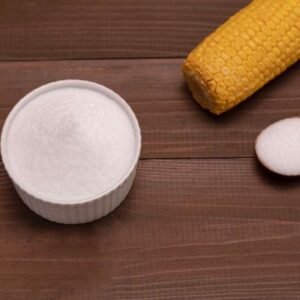
Is Your Diet ACTUALLY Healthy? Here’s How to Tell
I’ve probably uttered the phrase “healthy diet” when talking to patients, family, and friends more times than I’ve had cups of coffee—and that’s saying something!
But I’ll admit it’s not always entirely clear what a healthy diet looks like.
What does healthy eating really mean?
Let’s take a look…
Good news—healthy eating doesn’t mean you must follow a complicated diet or stock up on expensive superfoods. In fact, you may already be well on your way to a healthy diet.
Here are five simple ways to tell…
- Your Plate Looks Like a Rainbow
Look, I’m as big a fan of a good steak as anyone. Just make it grass-fed and organic when you can, and don’t indulge daily.
The fact is, most Americans are seriously dropping the ball when it comes to vegetables. And no, those three sad pieces of lettuce on your burger don’t count as a serving.
Your plate should be brimming with enough colorful vegetables to make an artist jealous. We’re talking dark leafy greens, bright orange carrots, deep purple beets—the works!
If you’re not eating a rainbow when you tuck in for most meals, you aren’t doing it right. Aim for five to seven servings daily.
- You’re Swimming in Good Fats
Forget everything you learned about “healthy” low-fat diets in the ’90s. Your body needs good fats, especially omega-3s. If your goal is a healthy diet, load up on foods like cold-water fatty fish, walnuts, and even trendy avocado toast.
But there’s a twist. Not all fats are created equal. Limit your consumption of inflammatory vegetable oils and avoid processed foods that are swimming in bad fats.
- Your Protein Has a Story
You should be eating meats that have lived their best life before becoming your dinner. That means choosing grass-fed beef, free-range chicken, and wild-caught fish because they come from animals raised the way nature intended.
Why does it matter? Because better living conditions mean better nutrition and less contamination. It’s that simple.
- Your Food Labels Aren’t Complicated
Here’s a wild idea—food should actually look like food! If the items in your grocery cart have ingredient lists longer than this article or names you can’t pronounce, that’s a red flag. Ultra-processed foods aren’t just less healthy—they’re barely even food. They’re more like science experiments gone wrong. Swap them out for fresh foods instead.
- You’re Getting Enough Roughage
Let’s talk about fiber. I know it’s not the most exciting topic but stick with me here.
You likely know you need fiber to maintain regularity. But there’s another vital reason to get enough… to support your microbiome.
Your microbiome is a collection of all the microbes inside your body. If you want to keep it happy and healthy, eat enough soluble fiber. Fruits, vegetables, grains, and legumes are all good sources.
Soluble fiber serves as a food source for beneficial gut bacteria, promoting the production of short-chain fatty acids, which are linked to countless health benefits. Foods rich in soluble fiber include oats, beans, apples, and flaxseeds. Try incorporating these into your daily meals, but if you consistently struggle to get enough through food alone, a quality fiber supplement can help bridge the gap
The bottom line? A healthy diet isn’t about following some complicated rulebook or buying expensive “health” foods. It’s about eating REAL food, plenty of plants, and not too much of any one thing.
Start by making just one change this week—add an extra vegetable to dinner, swap out processed snacks for nuts, or read those ingredient labels before buying. Small, consistent changes add up over time. And remember, balance matters—so yes, you can still enjoy that occasional slice of pizza without guilt!
Written By Dr. Scott Olson, ND
Nearly 25 years ago, failed mainstream medical treatments left Dr. Olson in constant pain – and his health in ruins. And that’s when he did something REVOLUTIONARY. He began his career in medicine – and dedicated his life to uncovering the true, underlying causes of disease.
Through his innovative medical practices in Tennessee and Colorado, Dr. Olson has helped cure countless seniors from across America of arthritis… heart disease… diabetes… and even cancer. All without risky prescription drugs or painful surgeries.
View More Free Articles
A New Reason to Ditch Processed Junk
If you’ve ever walked the inside aisles of your local grocery store and thought, “This is all just junk,” your instincts were spot on. A new study published in the journal Thorax just added another red flag to the list of dangers linked to ultra-processed food—a 41 percent higher risk of lung cancer. That’s right....
When Being Winded on Stairs Is Serious (And When It Isn’t)
I had an athlete visit me recently because he experienced shortness of breath while climbing stairs. He is in great shape, so he was worried about what it might mean. “Doc,” he said, “I run five miles three times a week. Why am I huffing and puffing after two flights of stairs?” His concern is...
Study EXPOSES Hidden Danger Lurking in Your Car
We think of our homes and cars as safe havens. But according to a startling new study, they may be flooding your lungs with microscopic plastic particles—every single day. Researchers in France recently found that adults inhale an average of 68,000 microplastic particles daily from indoor air alone. To put that in perspective, that’s about...
Mailbag: Is Modern Food Making You Snore?
“What can cause snoring, and is there a way to correct this issue?” —Seeking Silence Hi Seeking, Snoring happens when the soft tissues in your throat relax and vibrate as air passes through during sleep. While several factors can cause snoring—from sleep position to nasal congestion—I want to share one trigger that might surprise you....
Simple Food Swap SLASHES Dementia Risk 28%
Let’s be honest… who would jump at the chance to cut their dementia risk by 28 percent. And no, you don’t need to run marathons, survive on broccoli, or learn to play the zither (whatever that is) to make it happen. All it takes is one easy swap—something that’s probably already in your refrigerator. Researchers...
This SMART Floss Exposes Hidden Health Danger
Scientists have created dental floss that doesn’t just clean between your teeth—it also tracks your stress while you’re flossing. Now, I know what you’re thinking… “Great—now even flossing is going to stress me out by telling me how stressed I am.” But this fascinating new tool from Tufts University could be a game-changer for understanding...
Is This "Safe" Sweetener Damaging Your Brain?
The headlines are alarming… “Popular Sugar Substitute Linked to Brain Cell Damage” and “Erythritol Could Damage Critical Brain Barrier” are just two of the dozens I’ve spotted recently. But before you toss every sugar-free product in your pantry, let’s take a closer look at what this study actually shows—and what it doesn’t. The latest research...
This Summer Threat Could SPIKE Your Blood Sugar
Picture this… It’s another scorching hot summer day. You crank up the air conditioning while watching the weather forecast, which predicts yet another “record-breaking” heat wave. It’s starting to feel like just another miserably uncomfortable summer. But what you might not realize is that—if you have diabetes—those rising temps could do far more damage to...
Move Over Yogurt—5 Foods That Pack MORE Probiotics
Let’s talk about your gut. The microbiome is the collection of trillions of bacteria and other tiny organisms that live in and on your body—especially in your gut—and help keep you healthy. I’ve written often about how vital it is to maintain a healthy microbiome. And you might have dutifully added yogurt to your shopping...
Is Your Heart Older Than YOU?
Maybe you feel young for your age. Good energy, decent sleep, eating your veggies. But what if I told you your heart might be a decade older than the rest of you? That’s exactly what researchers at Northwestern University found in a new study published in JAMA Cardiology. The average American woman’s heart is about...









